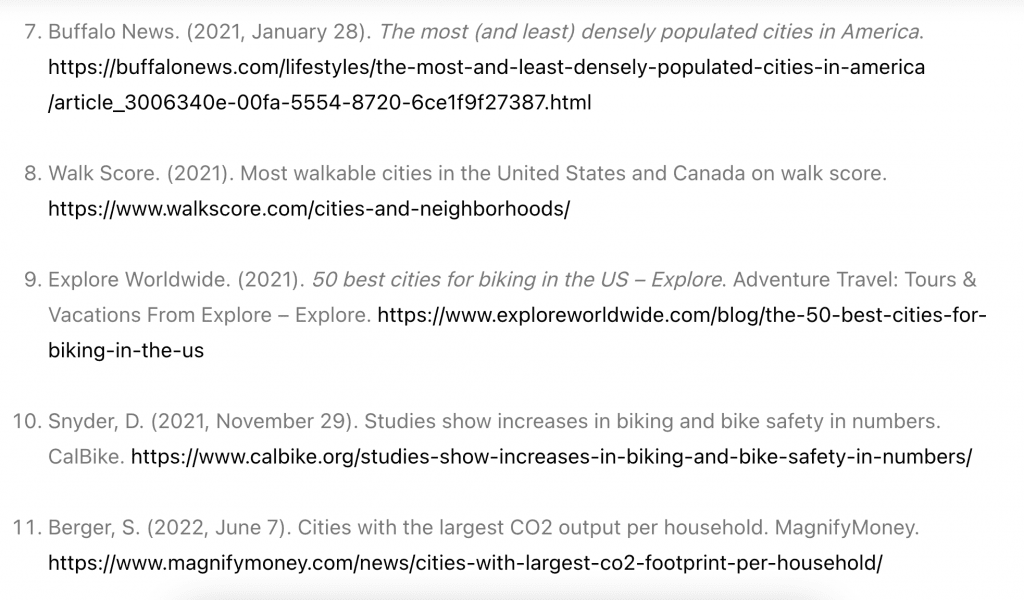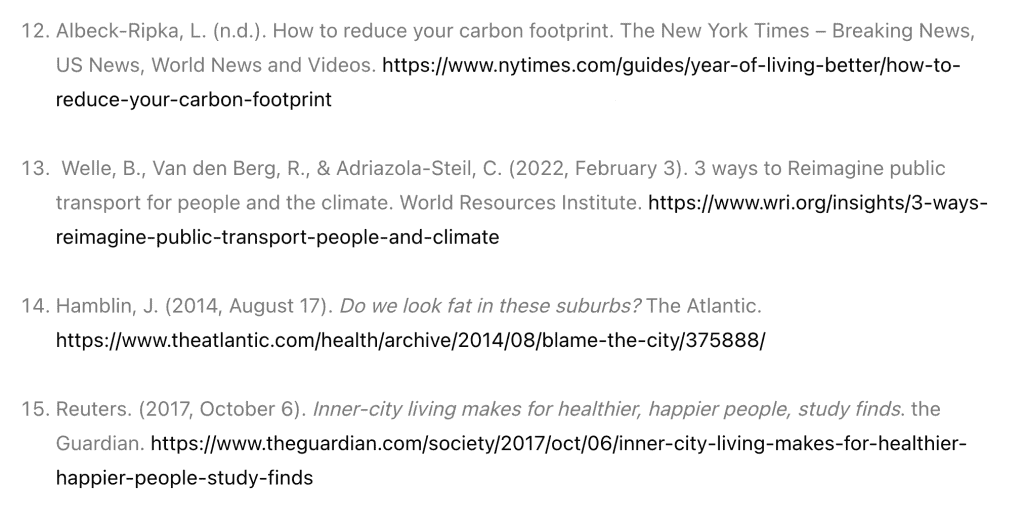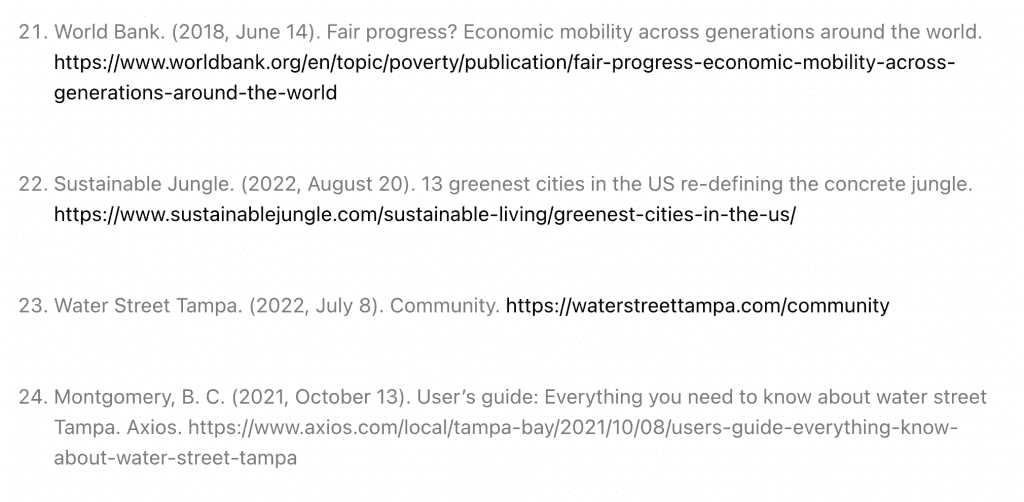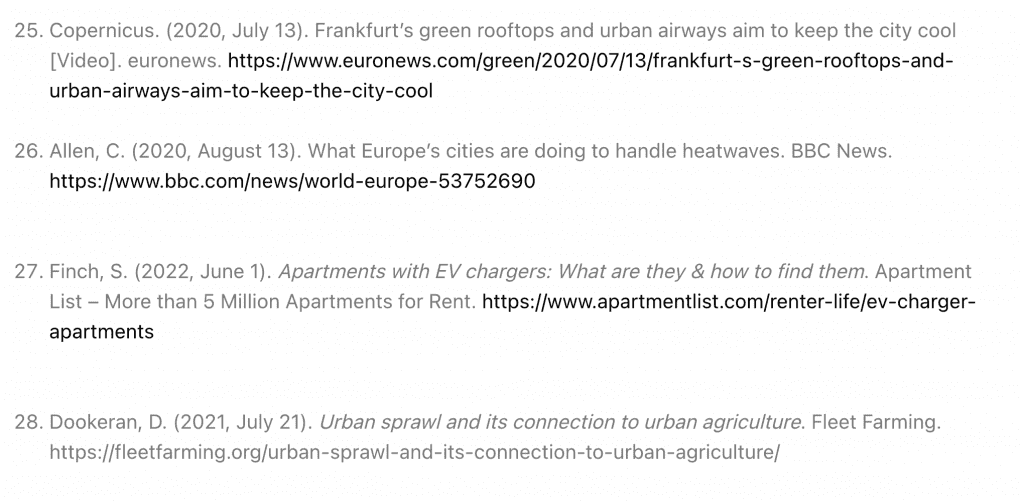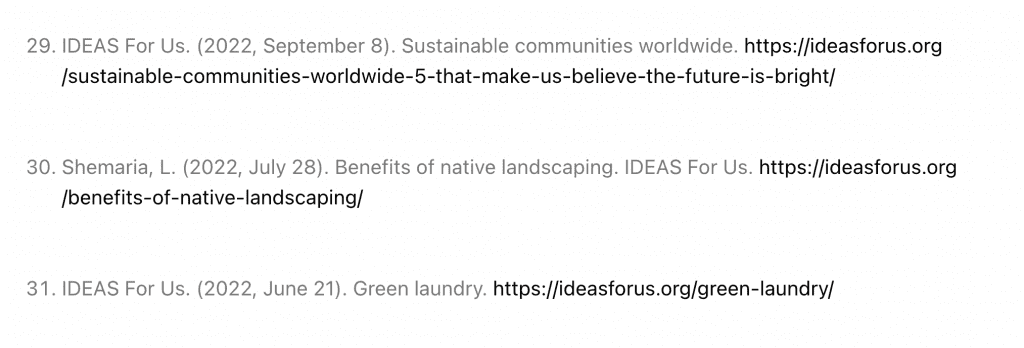Filled with people and towering buildings, urban areas might not be what comes to mind when you think of sustainability.1 Dense places have long been incorrectly associated with overcrowding, even by city planners. Density is defined by housing units per acre whereas overcrowding is measured by people per room. 2 Indeed, overcrowding can have many negative effects, but density and the resulting infrastructure can have many sustainable benefits.
Significantly, some of the most populated and most dense U.S. cities create the conditions necessary for sustainable practices. Because urban populations are steadily growing, it is necessary to embrace the sustainability of cities. Let’s look at the three examples of how urban density can cultivate sustainability.
1. Density Supports Environmentally Sustainable Transport
Dense urban development decreases the distance between locations people need to access which creates less dependence on cars. On the other hand, low-density housing and single-family homes increase dependence on cars and, as a result, on fossil fuels.3,4 Conversely, urban density supports the infrastructure needed to make biking, walking and public transport practical.5,6 These methods of transport are either emission free or lower in emissions per person than car travel.
Nine of the ten most dense cities in the U.S. are also the most walkable. 7,8 Furthermore, nine of the ten most dense cities U.S. are the best for bike infrastructure, and many are the safest cities for biking.7,9 When people feel that cycling infrastructure is safe, they are more likely to adopt this sustainable method of transport.10
Public transport is a way to significantly reduce emissions and leads to many cities having relatively low carbon footprints per person.11 A carbon footprint is essentially how many greenhouse gases a person produces.12 Public transport can use as little as one-fifth of the emissions as a private vehicle. 13 Of course, population density is necessary to create ridership (or sufficient passengers) for public transport. Urban density helps make this possible. Overall, with so many environmentally friendly options to get where you need to go, urban density can easily contribute to urban sustainability.7,9
2. Urban Density Promotes Health and Social Well-Being
Alongside being beneficial to the environment, walking and biking are also good for physical and mental health. Urban density lends itself to an active lifestyle that helps lower rates of diabetes, blood pressure and heart disease. 4, 14 More physical activity makes those who live in cities healthier, and it can also make them happier. 15 Regular physical activity is proven to benefit mood and emotion.16
Dense urban areas can also foster social well-being. U.S. cities have long been diverse.17 Attracting people from all walks of life, cities establish social inclusivity. 4 The social inclusion generated by diversity is linked to happiness and helps ensure equity.18, 19 Certainly, public transport also contributes to this social well-being through broadening access to education, employment as well as other opportunities and services.13 Walking and public transport, made possible by density, both support economic mobility. 20, 21 Altogether, equity, diversity together with mental and physical health are all supported by urban density.

Photo credit: Kirra Scudder
3. Developments in Urban Areas Are Environmentally Friendly
Some of the largest cities are also the most sustainable. For example, residents of New York City have one of the lowest carbon footprints in the U.S., while Seattle has embraced hydropower and environmentally friendly policies such as plastic bag bans. 11, 22
Today, some buildings are developed with urban sustainability in mind. As a result, environmentally friendly characteristics like energy efficient cooling systems, native plants and water features contribute to urban sustainability. 23, 24 What’s more, is that energy efficient cooling systems turn space used for air conditioning units into rooftop terraces. 23 Plants, rooftop gardens and green facades benefit urban areas by creating better air quality, cooling the surrounding area, mitigating effects of rainfall and becoming part of the ecosystem by attracting wildlife. 23, 25 Similarly, vegetation and water features work together to reduce the heat island effect. 23, 26 As heat is dangerous, keeping people cool keeps them safe. 26
Lastly, many new apartment buildings include electric car chargers. Equally important, this caters to those who already own electric vehicles and removes a barrier to entry for those who are potential electrical vehicle owners. As well, it makes electric vehicle ownership more practical. 27 Ultimately, through their design, many urban developments embody sustainable ideals.


Photo credit: Kirra Scudder
Conclusion
Sustainable practices come in many forms. Presently, urban density can help to diminish the effects of urban sprawl and leave more room for green spaces, but regardless of where you are, you can embrace new habits to help the planet and yourself.28 Next, check out these five sustainable communities. 29 Furthermore, here’s some ideas for how you can add sustainable practices into your life with native landscaping or how to make sure your laundry is green. 29, 30, 31

Photo credit: Kirra Scudder
Sources:

